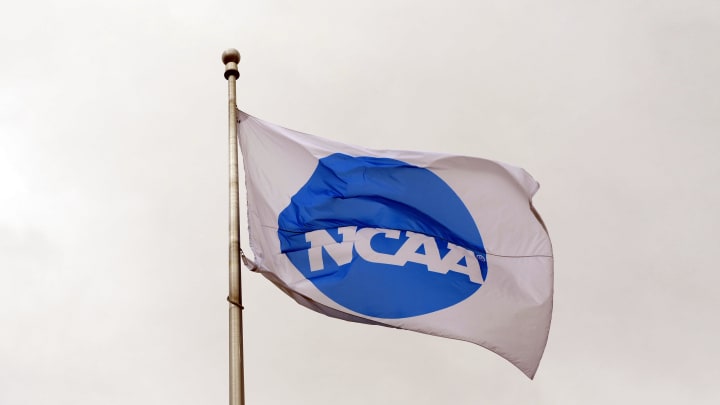NCAA’s settlement for NIL back payments receives pushback

The NCAA has found itself in more litigation regarding student-athlete compensation after multiple parties filed in opposition to the proposed multibillion-dollar settlement of three antitrust cases against the governing body and its conferences that is pending with a federal judge in California.
The pushback raises concerns over numerous issues about the deal, including whether it undervalues the student-athletes, discriminates against female athletes or puts another illegal cap on athlete compensation and the money that would go to the attorneys.
Under the proposed settlement, Division-I schools and conferences would help fund $2.8 billion in damages that are owed to thousands of former and current student-athletes over a 10-year window. Power conferences would pay a majority of that price tag, though smaller leagues and universities have tried to oppose the terms (more on that later).
The settlement also states that Division-I schools would be able to pay their student-athletes directly for the use of their NIL and would be subject to a per-school cap that would increase over time based on revenue. Deals with entities outside the school could still be made, but the NCAA would have greater oversight of them. Scholarship limits would also be eliminated and replaced with roster-size limits instead.
One set of arguments against the settlement made by lawyers who are involved with a similar student-athlete compensation lawsuit in Colorado stated that the NCAA is undervaluing the claims made by the student-athletes. While representing all Division-I athletes from any sport since 2020, the plaintiffs essentially seek a pay-for-play system in which schools can pay their athletes for their athletic services (which is different than using their name, image and likeness) and value the claims at $24.3 billion based on an estimate from an economist. They cited those damages in their filing last week.
A different argument that was raised by attorneys representing six women’s rowers stated that the NCAA’s “failure to promote women’s sports depressed the value of female athletes’ NIL over decades.” Based on the economic modeling for the settlement, which factored in NIL, TV broadcasts and media contracts, football and men’s basketball players are expected to get a large percentage of the damages.
Both parties concluded that the proposed cap on NIL payments is illegal. The lawyers involved in the Colorado case argued that a cap can’t be enforced without going through collective bargaining first, which would involve negotiating with student-athletes. Attorneys representing the women’s rowers pointed to the fact that the NCAA has repeatedly violated antitrust law in trying to limit student-athlete compensation.
The pushback from attorneys representing the interests of student-athletes came after U.S. District Judge Claudia Wilken denied a motion from Houston Christian University, an FCS school in the Southland Conference, to intervene in the House v. NCAA lawsuit. The school felt its interests were not represented in the settlement nor was it involved in the negotiations. HCU also warned that if it had to pay back damages that it claims it never inflicted on student-athletes, school officers would potentially face lawsuits and students would be denied resources essential to their college education.
Wilken wasn’t moved, as she countered that HCU is a Division-I school voluntarily and can cease to participate in Division-I sports if it wanted to. She also said HCU had opportunities to impact the House v. NCAA case since it began in 2020, though it did not, and that a motion now would delay the resolution of the litigation and derail settlement discussions.
If Wilken had granted the motion, it would’ve opened the door for small universities and conferences across the country to object to the NCAA’s proposed settlement. Some leaders from non-football leagues, including Big East commissioner Val Ackerman, argued in May that their portion of the bill was too high and that power conferences should be paying a larger chunk in damages since most of the backpay is going to former power conference student-athletes anyway. Instead, they suggested that power conferences pay 60% of the damages, though their arguments were not heard.
Time will tell how Wilken handles the filings from the two parties that represent thousands of former student-athletes.
